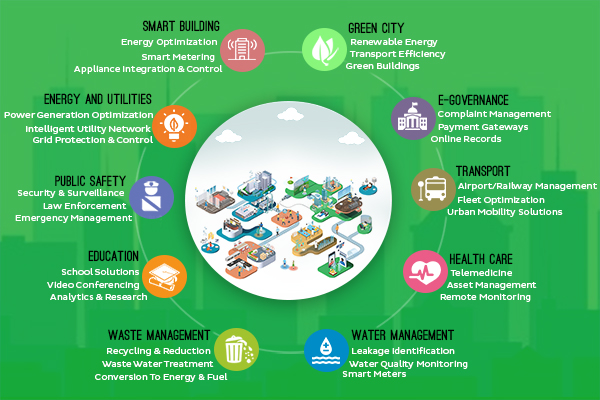In this multi- part series on Smart Cities, we take a look at SMART Cities in India- its relevance, components, strategy, funding, key challenges and finally the role of real estate investments. The first article talks about what is a Smart City.
India’s population is increasing rapidly; in fact the urban populace is expected to hit 814 million by 2050 from the current 400 million. Currently, 31% of India’s population resides in cities and contributes to 63% of the total economic activity. However, it is projected that 40% of India’s population will move to cities by 2030 (urban population: 600 million) and generate 80% of the economic growth. Gradual migration of rural population is due to urban revolution, wherein rural population is moving to cities in search of better opportunities. As cities are the drivers for economic growth, their development as sustainable, citizen friendly and economically viable centres is the need of the hour.
The ‘Smart Cities’ mission, was launched in 2015, to transform and better the lives of Indian citizens through incorporation of smart solutions that would impact and strengthen a city’s social, economic and physical infrastructure. ‘Smart Cities’ are envisioned as highly progressive urban regions with advanced infrastructure, transport, sustainable real estate, communications, market feasibility, and technology.
The Mission
For the first time, the Ministry of Urban Development (MoUD) undertook the challenge of selecting cities to focus on area based development, resources and priorities of citizens. Post comprehensive study of the European & American cities, the MoUD in conjunction with Bloomberg Philanthropies is determined to implement strategies and learnings to innovate pan-city developments across India.
The strategy
Retrofitting of areas more than 500 acres will be identified through a strategic selection and include a better level of infrastructural services. In the case of redevelopment, an existing building will be replaced and enable the co-creation of a new arrangement. This will be targeted to an area more than 50 acres that has been identified by Urban Local Bodies (ULBs) and citizens. Meanwhile, Greenfield developments will target more than 250 acres vacant area using planning, financing, tools (land pooling), to create affordable housing for the poor and address the expansion needs of industrial growth.
The cities:
The Smart Cities Mission plans to cover 100 cities in a period of five years. It intends to leverage all assets – business, experts, reforms (institutional/managerial), creativity (citizens), tools and technologies to ultimately improve the quality of life, strengthen the city’s governance and target the entire eco-system for development, also creating a replicable model for other cities to follow.
In January 2016, the first 20 cities of the Smart Cities Mission were shortlisted by the government. The cities selected were Bhubaneshwar, Pune, Jaipur, Surat, Kochi, Ahmedabad, Jabalpur, Vishakhapatnam, Solapur, Devangere, Indore, New Delhi Municipal Corporation, Coimbatore, Kakinada, Belagaum, Udaipur, Guwahati, Chennai, Ludhiana and Bhopal.
Post another fast-track competition, 13 additional cities were added to this list in May 2016 pushing the count to 33 cities in total.. The new cities were Lucknow, Warangal, Bhagalpur, Raipur, New Town Kolkata, Port Blair, Imphal, Ranchi, Panaji, Agartala, Faridabad, Chandigarh and Dharamshala.
In the latest list released by the Smart Cities Mission another 27 cities have been added post revisions, bringing the total to 60 cities. The cities include Varanasi, Aurangabad, Kalyan-Dombivli, Kanpur, Nagpur, Nashik, Thane, Madurai, Salem, Thanjavur, Vellore, Hubli-Dharwad, Managaluru, Shivamogga, Tumakuru, Amritsar, Ujjain, Tirupati, Ajmer, Agra, Gwalior, Rourkela, Kota, Namchi, Jalandhar, Kohima and Vadodara.
Mitigation of poverty and smart solutions to the much required urban transformation has finally arrived in India.
In the next part, we take a look at the selection & implementation strategy.

